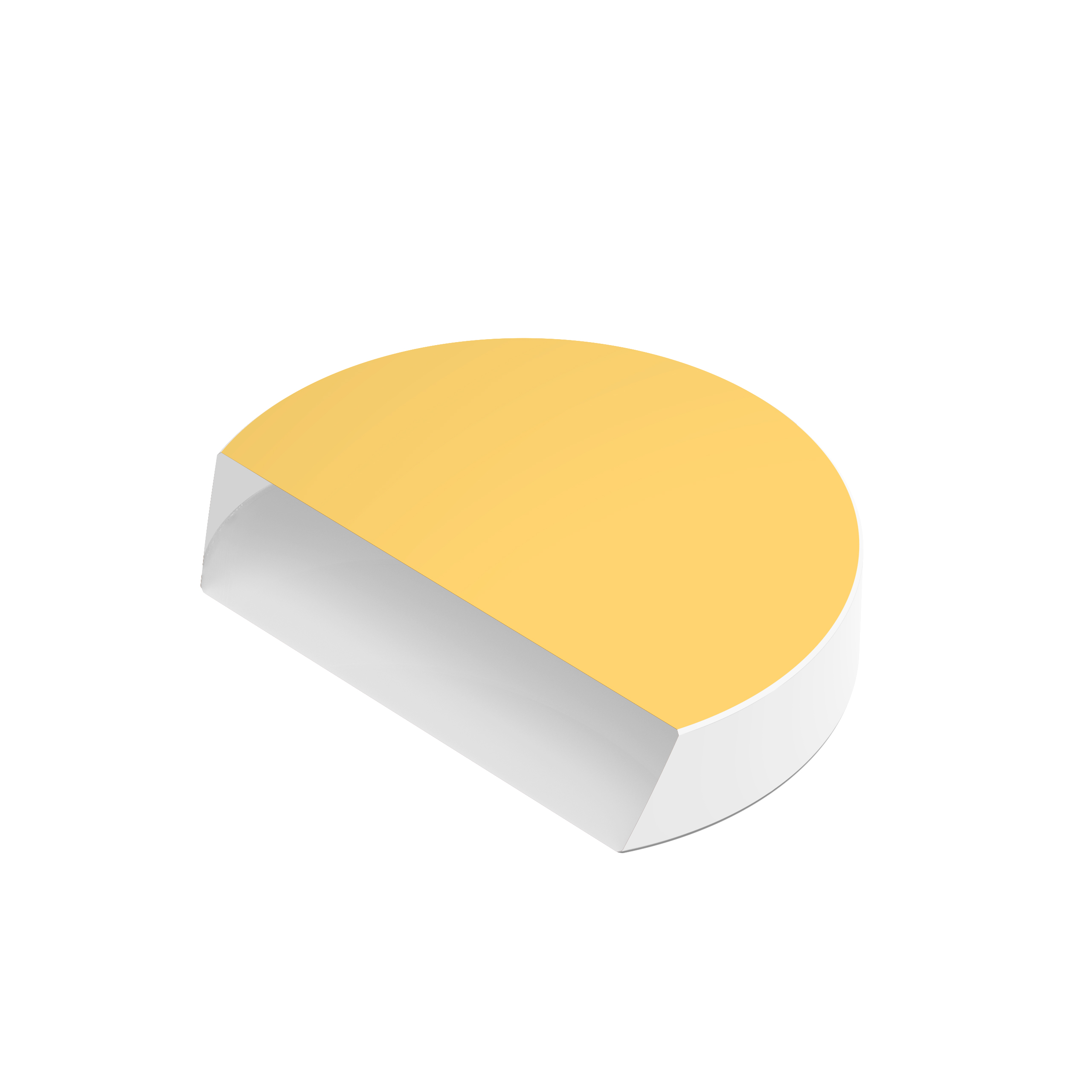close
Choose Your Site
Global
Social Media




D-shaped Mirrors from our precision manufacturing offer reliable optical solutions for beam steering and spatial optimization. Engineered with high-quality substrates and custom coatings, our mirrors feature precise angular tolerances and durable surfaces, ideal for laser systems, spectrometers, and compact optical setups. As a china manufacturer, we provide tailored designs—custom dimensions, coating materials, and surface finishes—to meet unique application requirements, supported by strict quality control and rapid prototyping capabilities.
| Availability: | |
|---|---|
D-shaped mirrors feature a semicircular curved surface paired with a straight edge, allowing them to efficiently separate or redirect beams in space-constrained environments. The flat edge is engineered with a sharp bevel (typically 0.1 mm) to minimize diffraction effects when beams pass close to the mirror’s edge.
Substrates: Commonly constructed from UV fused silica or BK7 glass for high thermal stability and optical clarity. Fused silica is preferred for its low coefficient of thermal expansion, ideal for high-precision applications.
Metallic Coatings: Aluminum (UV to visible), silver (visible to IR), and gold (IR) offer broadband reflectivity. For example, protected silver coatings achieve >97% reflectance from 450 nm to 20 μm.
Dielectric Coatings: Provide near-total reflection (≥99%) over narrow spectral ranges, such as 750–1100 nm, with minimal absorption.
Manufacturing Precision
These mirrors undergo rigorous fabrication processes, including ultra-precision grinding and ion-beam sputtering for coating deposition. Surface flatness is maintained at λ/10 @ 633 nm (e.g., ≤63 nm deviation), ensuring minimal wavefront distortion.

Product: D-shaped Mirrors
Material: Fused Silica/BK7
Clear Aperture: >90%
Diameter Tolerance: +/-0.1mm
Bevel: Break sharp edges
Flatness (PV): <1/10L@633nm
Surface Quality: 10-5
Thickness Tolerance: +/-0.1mm
The D-shape design allows for the separation of tightly aligned beams (≤0.1 mm spacing) by directing one beam while letting the other pass unobstructed. This is critical in applications like interferometry and laser beam combining.
Metallic coatings deliver reflectivity up to 99% in specific wavelength ranges (e.g., silver for 450–20,000 nm).
Dielectric coatings offer >99% reflectance over narrow bands, making them suitable for applications requiring minimal energy loss, such as spectroscopy.
Size: Available in diameters from 12.7 mm to 50.8 mm, with thicknesses of 6 mm ±0.2 mm.
Surface Quality: Scratch-dig ratings as low as 10-5 (10-μm scratches, 5-μm digs) ensure minimal scattering.
Coatings are engineered to resist environmental degradation. For example, protected gold coatings withstand oxidation and maintain performance in harsh conditions.
Beam Steering: Redirect laser beams in industrial cutting, marking, and additive manufacturing systems.
Beam Pickoff: Extract a portion of a laser beam for monitoring or secondary applications without disrupting the primary beam path.
Endoscopy: Integrate into compact imaging devices to fold optical paths, enabling miniaturized endoscopic systems with high-resolution imaging.
Ophthalmology: Correct aberrations in adaptive optics systems, improving retinal imaging quality.
Direct light through monochromators or onto detectors in fluorescence and Raman spectroscopy, ensuring efficient light collection and analysis.
Telescopes: Use in adaptive optics systems to correct atmospheric distortions, enhancing celestial object imaging.
Optical Metrology: Serve as reference surfaces in interferometers for measuring surface topography with nanometer precision.
Can D-shaped mirrors be customized for specific wavelengths?
Yes. Coatings can be tailored to match UV, visible, or IR spectral ranges. For example, dielectric coatings optimize reflectivity for 488–694 nm or 700–950 nm bands.
How should D-shaped mirrors be cleaned?
Use lint-free wipes and a 50:50 mixture of isopropanol and deionized water. Avoid abrasive materials. For stubborn residues, a slurry of precipitated chalk may be applied gently.
What is the typical damage threshold for these mirrors?
Damage thresholds vary by coating. Dielectric mirrors can withstand 1 J/cm² (1064 nm, 20 ns pulses), while gold-coated mirrors handle higher power densities (e.g., 750 W/cm for CW IR lasers).
Are D-shaped mirrors compatible with automated systems?
Yes. Many manufacturers offer kinematic mounts for precise alignment, ensuring compatibility with robotics and automated optical setups.
Our D-shaped mirrors undergo interferometric testing to ensure surface flatness within λ/10 and scratch-dig ratings of 40-20 or better, meeting ISO 9001:2015 quality standards.
We collaborate with clients to design mirrors tailored to specific wavelength ranges, environmental conditions, and mechanical constraints. Our in-house coating facilities enable rapid prototyping.
Coatings are rigorously tested for durability and reflectivity, ensuring consistent performance in high-power laser systems and long-term field applications.
With a network of certified distributors, we provide technical assistance and prompt delivery worldwide, backed by a 12-month warranty on all products.